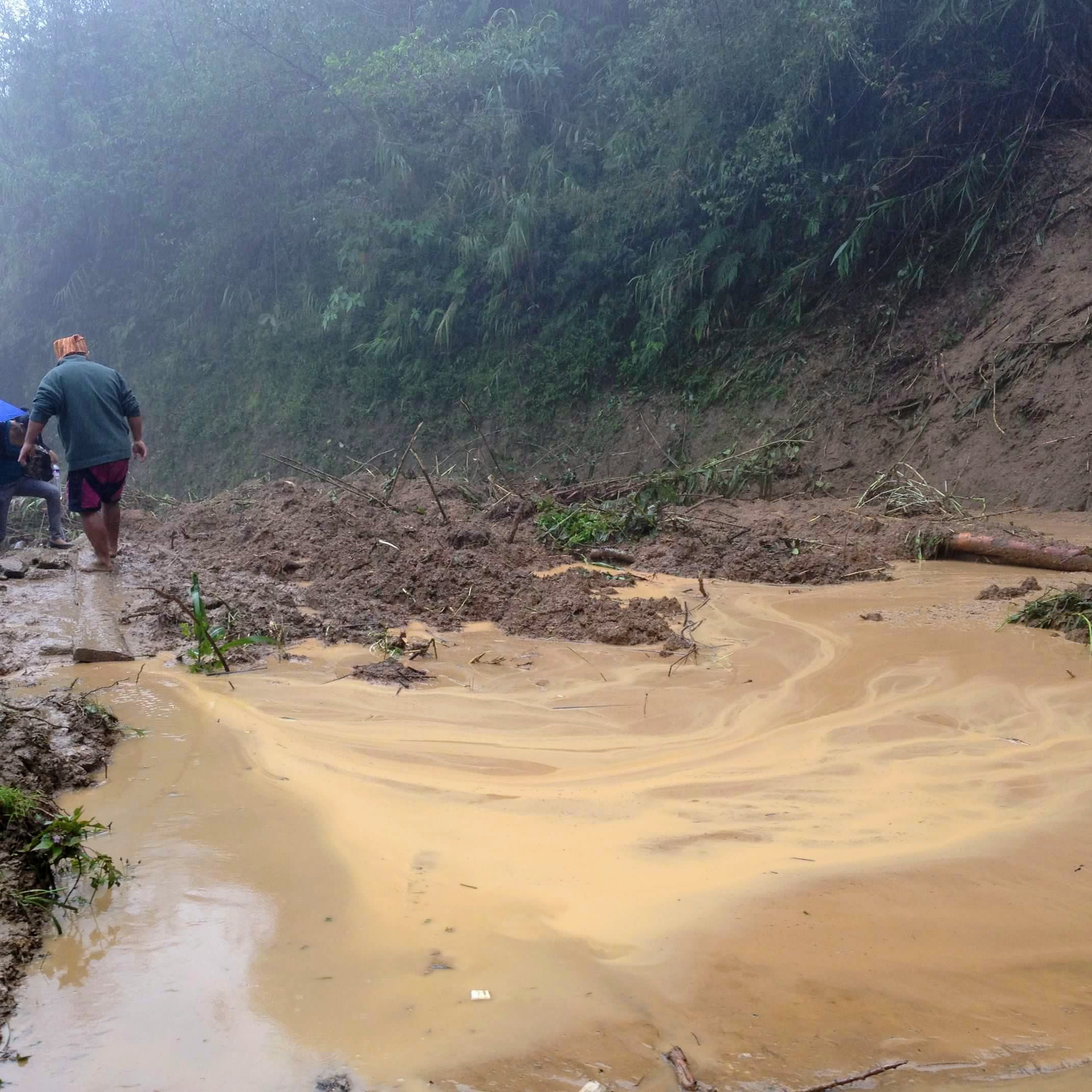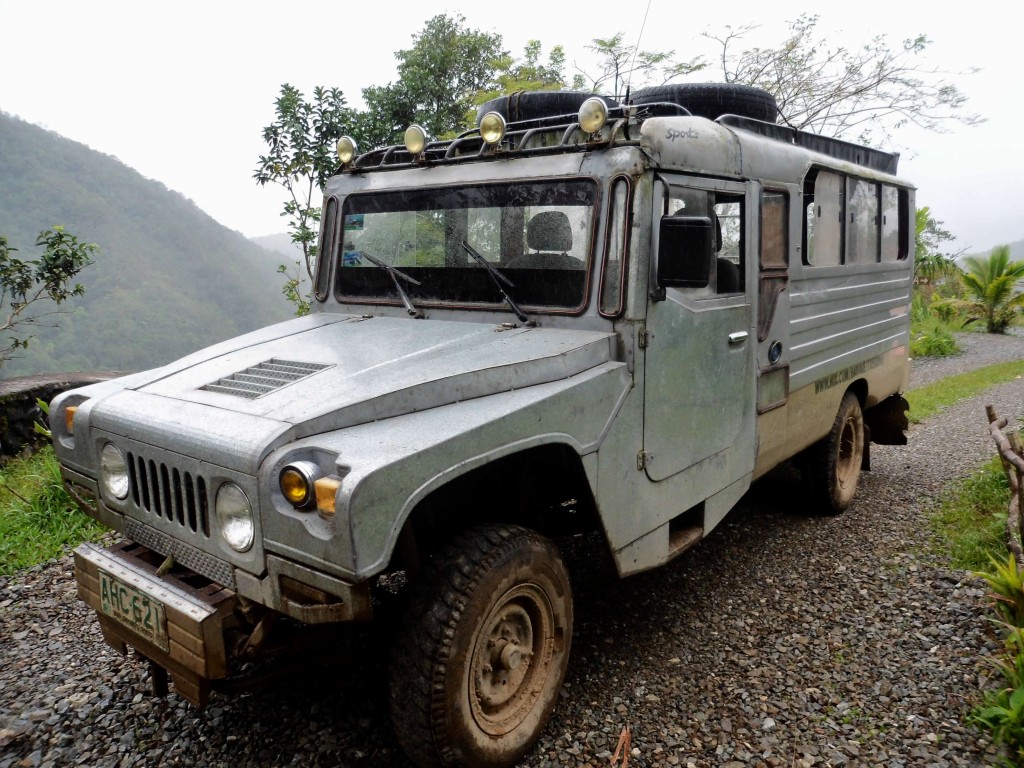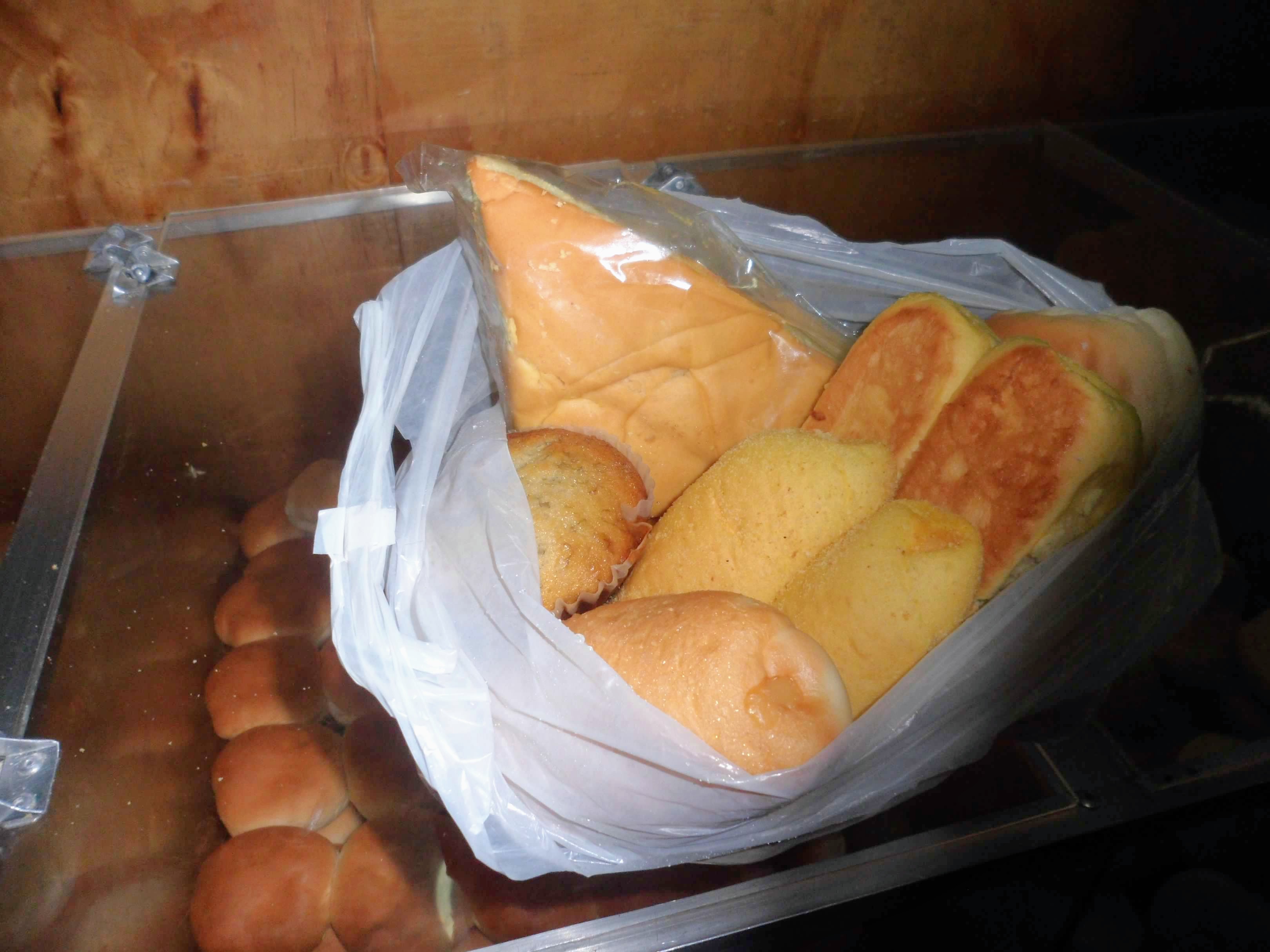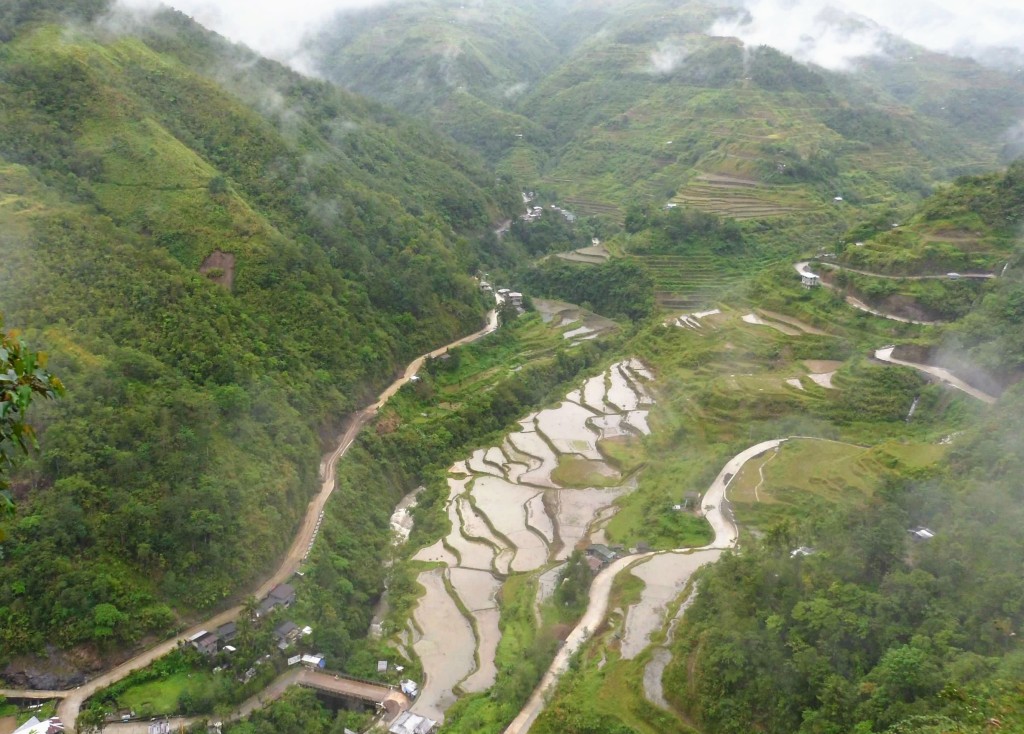Getting to the Banaue Rice Terraces in the remote mountains of Banaue, Ifugao in the Philippines was tiring, adventurous, and laughable. The visit to the rice terraces was awe-inspiring, relaxing, educational, and fed my need for exploration. I brought back with me knowledge, memories, stories to tell, and carved figures made from local wood. The few days that I spent at the Banaue Rice Terraces was one of the best experiences I had, while visiting my parents homeland. I love sharing that story…

The leveled rice terraces of Banaue follow the slopes of the lush mountains, and were built by the ancestors of the Igorot people. They are estimated at over 2000 years old, although some researches contend they were built much later. Rice has been an important ancient ancestral crop to this country, and is served everyday, sometimes at every meal.
UNESCO WORLD HERITAGE SITE– In 1995, UNESCO inscribed The Rice Terraces of the Philippine Cordilleras as a world heritage site. It was the first site to be placed in the ‘Cultural Landscape’ category. The Rice Terraces of the Philippine Cordilleras inscription has five sites, which are all on the island of Luzon: the Batad Rice Terraces, Bangaan Rice Terraces (both in Banaue), the Mayoyao Rice Terraces, the Hungduan Rice Terraces, and the Nagacadan Rice Terraces.

Prior to my trip to the Philippines, I asked my cousin who lives in Manilla if she would like to accompany me to the rice terraces. Being family and having that adventure gene, Doris said “Yes”! So the two of us boarded an overnight bus that left the dusty humid city of Manila, to the misty peaceful mountains of Banaue.
The ride was uncomfortable, fatiguing, and chilly. Since it was humid in the Philippines, the AC was turned up to an unnatural high that most of us on the bus were shivering. We did make a few stops to stretch our legs, use the toilet. and smoke cigarettes.

Once we arrived in Banaue the weather had turned damp, and the were skies gray. Our driver from our accomodations was already there waiting for us. They calmly mentioned there was a mud slide due to a torrential down pour the night before. I was not sure what that meant at the start, but I soon learned what that meant.
It meant that my cousin and I had to walk a narrow wooden plank over loose mud in the rain, with a steep hillside just a few feet away. I laughed at the whole situation, how could I not? I have been through many crazy traveling situations before, and this was going to be another one. This time I brought along my cousin for the fun.


The men who were bringing us across the plank told us not to look down, in which I started to laugh. I over confidently started to walk across the plank with one of the men holding my arm. I looked back and yelled to my cousin, to step where I step. That was when I misstepped, and my foot got sucked into the mud, again I had to laugh. With care, I slowly pulled my foot out making sure my shoe was still on. It was, and I cautiously walked to the jeep. I was muddy, wet, and loved every second of it.
We were loaded into the jeep, out of the rain, and off to the Native Village Inn. I was also wondering how long it would take to clean and dry my shoes, since I only had this pair and flip-flops!

Native Village Inn
When looking for accomodations, I could not pass on staying at the Native Village Inn. This inn is a drive from Banaue town proper, but it sits peacefully on the hills overlooking the terraces. The lush jungle surroundings, the misty mornings, and low hanging clouds over the terraces was exactly what I was hoping for. It was meditative, relaxing, and a much needed exit from the overwhelming Manila.
The rooms which are Ifugao huts, are what intrigued that adventurous side of me. My cousin who lives in the Philippines was just as excited for the visit, and staying inside an Ifugao hut. There was a ladder to climb, and a small doorway to crawl through. It was comfortable inside with a mattress floor, so you could sleep anywhere in the hut. The showers and restrooms were in separate building, of course. I have slept in some interesting accomodations in my travels, and this was one of my top five.

The food at Native Village Inn was good and predictable for where we were staying. According to others the meal prices were on the higher side, but I did not see it that way. The prices were lower than what was in America, plus the convenience of having tasty hearty meals a few feet away from my hut ladder was wonderful.
I had toast and coffee with magnificent morning views, an English style breakfast, and fresh fried fish with vegetables and fries. There were other options on the menu like vegetable chop suey and rice dishes. Everything was made to order and delicious.


We had booked a private tour with Native Village Inn, and it was fantastic. The guides were great and brought us down into the fields by jeep (pic below). The ride was bumpy, and harrowing in some places due to the muddy roads. I asked the driver if I could give it a go, but he said I was not included on the insurance, so I took that as a hard no.

We did not walk the terraces on the hillsides since it was still quite muddy and drizzly, but we did walk through the terraced rice fields along the valley floor. I found this area fascinating due to the locals who lived, worked, worshiped, and went to school in the rice fields.

We walked above the wet rice fields on narrow pathways that brought you from home to home. We were educated on how locals lived, the irrigation system, tourism, and how the younger generation were wanting to leave for higher paying jobs in the city. I told our guide that has been an issue world wide in other farming communities, but these children sometimes return with better knowledge on effective farming practices.

I was intrigued with village life within the Banaue Rice Terraces. We spoke about the home structures, I met locals by stepping inside their houses, and also visited the local Catholic church. There were families working by the river, storekeepers selling local produce, and a man who carved Infugao images out of local wood. I bought a couple of sculptures and they sit on my shelf at home. I always believe in purchasing artisan made souvenirs as it supports art, culture, and local communities.
The entire visit to the rice terrace community was an extraordinary experience. One that I still think back upon, since I have an interest in organic and natural farming practices.
On our last day in Banaue, our guides brought us back into town to take yet another uncomfortable overnight bus back to Manilla. While my cousin and I waited for our bus, we stepped into a local bakery where I chose a bag full of freshly baked bread for pennies a piece. I believe the whole bag cost me around a quarter (.25 cents), which I found both exciting and insane. Looking back, I should have bought a couple dollars worth just to do it!


While waiting for our return bus, I held onto each moment since I knew we were heading back into congested Manila. I watched the low lying clouds, felt the misty weather, and the stillness of the hills. I drank instant black coffee, a glass of mango juice, and noshed on one of my ‘pennies a piece’ bread.

I thought about all the ancestors who had some universal knowledge, and ingenuity to build these terraces a couple thousand years ago. How over centuries families were still working these tiered rice fields out of heritage, culture, and traditions. I wondered if the locals stayed there because they do not know anything else, the love of their lifestyle, and understanding the importance of their farming practices. I know, I think a lot!
I can say that I left my visit from Banaue Rice Terraces wanting to understand more about the earth, ancient cultures that still exist in modern days, and the importance of organic farming. This is what it means to travel for me. To keep asking questions and to keep finding answers, which is almost impossible because more questions are created when looking.

We all have travel stories and memories to share, and not to share. I enjoy telling stories like this, and I hope you enjoy reading them. Keep exploring, asking questions, and looking for those answers.
Native Village Inn Address: Barangay Uhaj, Banaue Ifugao, Town Center, Banaue, Philippines, 3601
_____________________
Photo Gallery
The rice terraces are occasionally referred to as the “eighth wonder of the world”.








________________
Fill your life with adventures, not things. Have stories to tell not stuff to show…

🌎 Thank you for visiting my website and NEVER STOP EXPLORING!
📸 All photos are taken by me and are my intellectual property – Trixie Navarre








Leave a comment